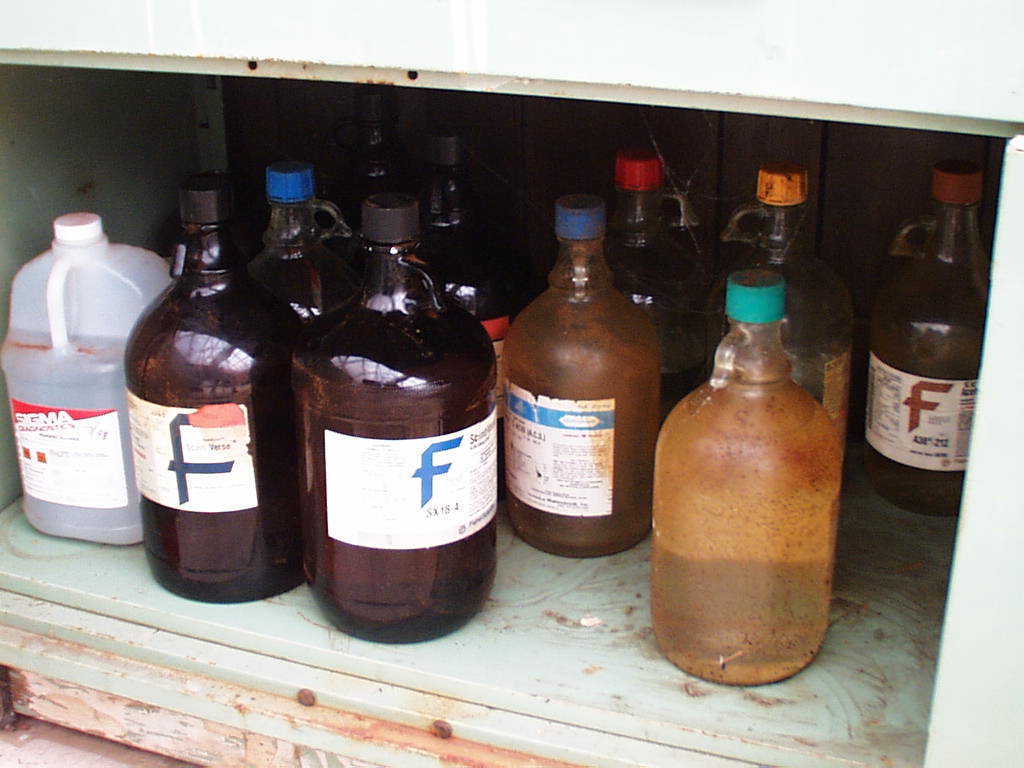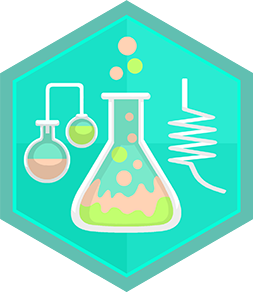Collect and label chemicals
Collect common household safe chemicals (baking soda, vinegar, salt, sugar, dish soap), label containers clearly, and organize them while learning about uses and safety.



Step-by-step guide to collect and label chemicals
GHS Classification: The TRUTH of Chemicals Unveiled
Step 1
Gather all the materials on a clean table so everything is within reach.
Step 2
Ask an adult to stay with you before you begin the activity.
Step 3
Wash the empty containers with warm soapy water to make them clean.
Step 4
Dry the containers completely with a clean towel or let them air dry.
Step 5
Use a measuring spoon to put a small amount of baking soda into the first container.
Step 6
Pour a small amount of white vinegar into the second container using a small cup or spoon.
Step 7
Spoon a small amount of table salt into the third container.
Step 8
Spoon a small amount of sugar into the fourth container.
Step 9
Add a small squirt of dish soap into the fifth container.
Step 10
Stick a label with the chemical name on each container using sticky labels or masking tape and the marker.
Step 11
Write one common use and one safety tip on each label with the marker.
Step 12
Arrange the labeled containers neatly on the tray or box grouping similar uses or hazards together.
Step 13
Share your finished collection and labels on DIY.org.
Final steps
You're almost there! Complete all the steps, bring your creation to life, post it, and conquer the challenge!


Help!?
What can we use if we don't have sticky labels, masking tape, or a measuring spoon?
If you don't have sticky labels or masking tape, cut small squares of paper and tape them to the containers with clear tape and write with the marker, and if you lack a measuring spoon use a clean kitchen teaspoon or a disposable plastic spoon to portion the baking soda, salt, and sugar.
What should we do if a label peels off or the baking soda and vinegar accidentally mix and fizz?
If a label peels, make sure the container is completely dry before applying it and press firmly or cover it with clear tape, and to avoid accidental fizzing keep the baking soda and vinegar in separate containers and add only the tiny measured amounts called for in the steps under adult supervision.
How can we adapt the activity for different age groups?
For preschoolers, have an adult pre-wash and pre-measure small amounts of baking soda, vinegar, salt, sugar and add the dish soap while the child sticks pre-written labels and draws a picture with the marker, and for older kids let them use the measuring spoon, write one common use and one safety tip per label, and arrange the tray themselves.
How can we extend or personalize the collection before sharing it on DIY.org?
Personalize the display by decorating containers with colored tape or stickers, adding a small photo or drawing of each common use to the sticky label, creating a matching 'chemical card' with name, use and safety tip to place on the tray, and then photograph the arranged collection to share on DIY.org.
Watch videos on how to collect and label chemicals
Hazardous Materials Safety Training: Procedures for Hazardous Chemicals
Facts about household chemical safety
🫧 Baking soda (sodium bicarbonate) fizzes with vinegar because they make carbon dioxide gas — that’s the same fizz used in volcano projects!
🧽 Dish soap contains surfactants: molecules that grab both water and oil, so a few drops help lift grease away quickly.
🧴 Most household vinegar is about 5% acetic acid, strong enough to act as a natural cleaner and remove limescale.
🧂 Salt (sodium chloride) has been used for thousands of years to preserve food before refrigerators were common.
🍬 Sugar crystals are tiny sparkly structures — and because sugar and salt can look similar in jars, clear labels help prevent recipe mix-ups.
How do I set up a safe household chemicals collection activity for kids?
What materials do I need to collect and label common household chemicals for a kid-friendly science activity?
What ages is this activity suitable for?
What safety tips and learning benefits should I include when collecting and labeling household chemicals?


One subscription, many ways to play and learn.
Only $6.99 after trial. No credit card required



